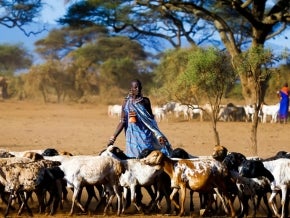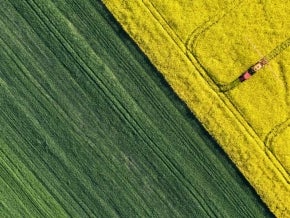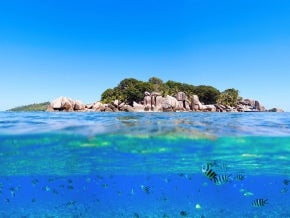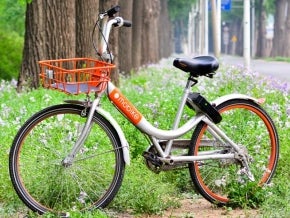Image

How can we feed the world and keep the planet healthy? We start by making smallholder farming more sustainable
People are already consuming at a rate faster than the planet can replenish. Yet the world’s population is expected to grow from 7 billion to 9 billion by 2050. This will considerably increase demand for energy, transport, buildings and food.
Agricultural production will need to increase to meet…
Image

From decline to recovery: a rescue package for the ocean
Our relationship with the ocean is at a crossroads. The decisions we take in the next five years will determine our future, our security, our very existence. They will make or break whole economies and dictate how and where we live. And there will be many more losers than winners should we ignore…
Image

From local to global action, saving the ocean requires re-thinking our relationship with single-use plastic
You might care about the 100,000 marine mammals that die annually from plastic and you may be one of the 25 million viewers of the infamous straw-up-the-sea turtle nose video. Or it may simply be that you don’t want to eat and drink plastic, swim in trash or witness more shoreline devastation from…
Image

Our food system is broken: we must repair it
Let’s start with the good news. Humankind is living longer than ever before. Fewer of us are going to bed hungry. Improvements in diets and modern medicine have contributed to a 20-year increase in the average global life expectancy since 1960. The number of undernourished people has fallen from 1…
Image

Science can help forge a new deal for nature
Biodiversity is life, all life on earth. The air we breathe, the food we eat and the water we drink are all only possible as long as we have healthy biodiversity - rich species diversity. The remarkable diversity of flowers filling the house on special occasions, trees and birds that help make us…
Image

Reversing the ocean’s accelerating decline
The ocean has shaped my life, from my beginnings in the outer islands of Fiji to my appointment last year as the UN Secretary-General’s special envoy for the ocean. Like millions of others before me who have taken sustenance and succour from Neptune’s world, I know there is so much for which we…
Image

Innovation drives Seychelles blue economy approach
Our oceans provide everything from food for billions around the world, to protecting communities and economies from storms—bringing it at least $1.5 trillion to the global economy every year. But they also face a barrage of threats, from marine pollution and dwindling fish stocks, to the dramatic…
Image

State-of-the art oceanic research ship will support LME conservation and management
In 2017, the UN Food and Agriculture Organization (FAO) and Norway launched a new, state-of-the-art marine studies vessel, among the most advanced of its kind. Its mission: To investigate some of the planet's least-explored ocean using cutting-edge technology and sophisticated equipment to help…
Image

Bike-sharing data and cities: lessons from China's experience
Digital technologies have spread rapidly in much of the developing world. However, the development and environmental benefits from using digital technologies are yet to be fully captured. The GEF launched the Sustainable Cities Integrated Approach Pilot in 2015. A key characteristic of the program…
Image

Elephants hate kale and other lessons in bringing conservation and development together
When I try to explain the importance of the GEF when it comes to protecting the world’s biodiversity, I end up with two main arguments.
First, biodiversity is not evenly distributed across the planet. And second, most of the places with the highest biodiversity are also the home of very poor people…
Pagination
- First page
- Previous page
- …
- 12
- 13
- 14
- 15
- 16
- …
- Next page
- Last page